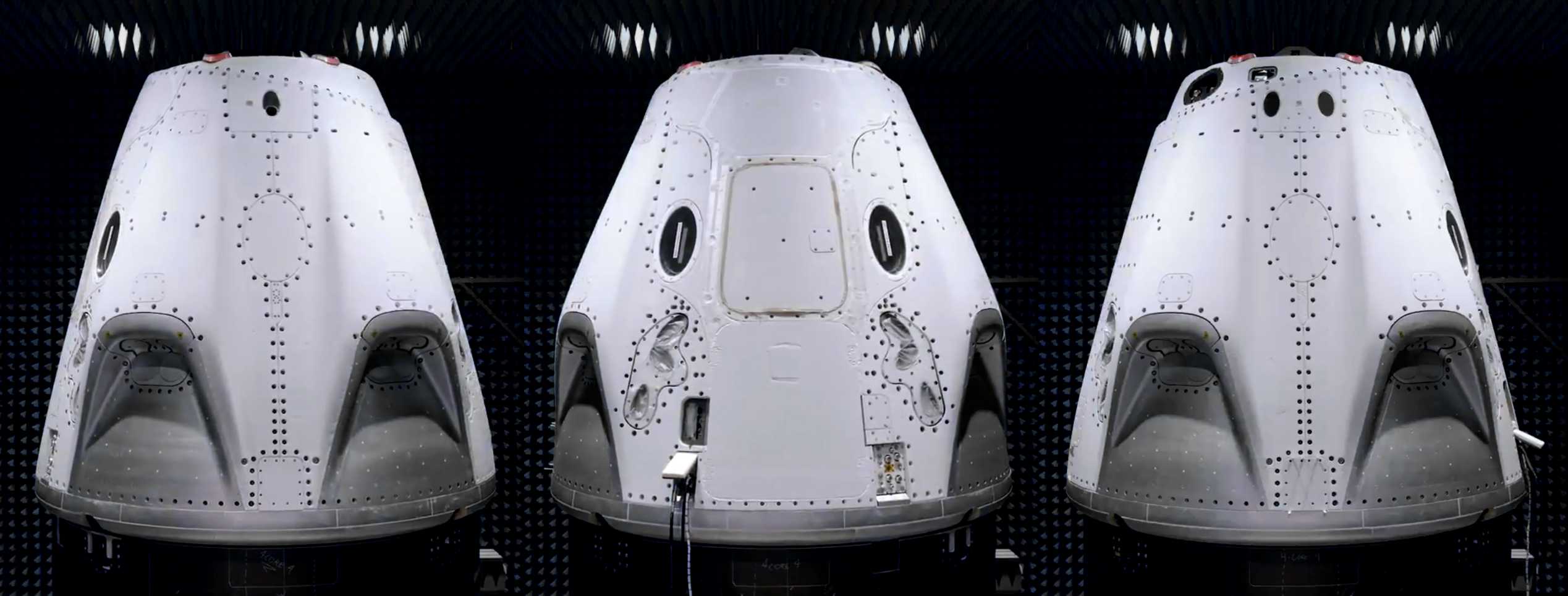

News
SpaceX's first astronaut-ready spaceship wraps up final factory tests before heading to Florida
Set to become the first commercial spacecraft ever to launch NASA astronauts, SpaceX has revealed that its newest Crew Dragon spaceship is in the midst of its final major factory tests, meaning that it could be just a matter of days before it ships to Florida.
Originally built to support SpaceX’s first operational NASA astronaut launch (PCM-1), an explosion that destroyed capsule C201 forced the company to shuffle its fleet and reassign that spacecraft (capsule C206) to an inaugural crewed test flight known as Demo-2. Thankfully, although C201 did explode during post-recovery static fire testing, the spacecraft had flawlessly completed an uncrewed test flight (Demo-1) the month prior, demonstrating a nominal Falcon 9 launch, space station rendezvous, docking, orbital reentry, and splashdown without a single visible hiccup. In short, Crew Dragon’s Demo-1 launch debut could not have gone better.
Around nine months later, having overcome the biggest hurdles posed by capsule C201’s explosion and unrelated parachute failures, SpaceX successfully launched its second finished Crew Dragon capsule – C205 – on a Falcon 9 rocket. That January 19th In-Flight Abort (IFA) test proved that SpaceX’s first human-rated spacecraft can safely whisk astronauts away from Falcon 9 even if it were to fail at the most stressful point of launch. Now, less than a month later, SpaceX’s third finished Crew Dragon spacecraft is nearly ready to head to Florida to begin preparing for the company’s historic astronaut launch debut.
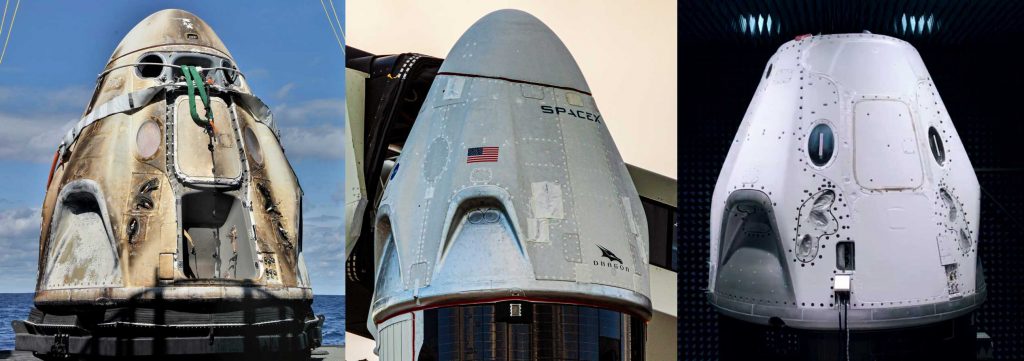
On February 11th, SpaceX released a video showing a 360-degree view of the Demo-2 Crew Dragon spacecraft (C206) inside its Hawthorne, CA factory’s built-in anechoic chamber – used to perform routine electromagnetic interference (EMI) tests. Meant to verify that Crew Dragon is protected from interference that can be caused by internal and external sources of electromagnetic radiation, EMI testing implies that all of the spacecraft’s systems are installed and operational.
Positive EMI test results should mean that Crew Dragon C206 is (more or less) ready to be transported to SpaceX’s Florida processing facilities.
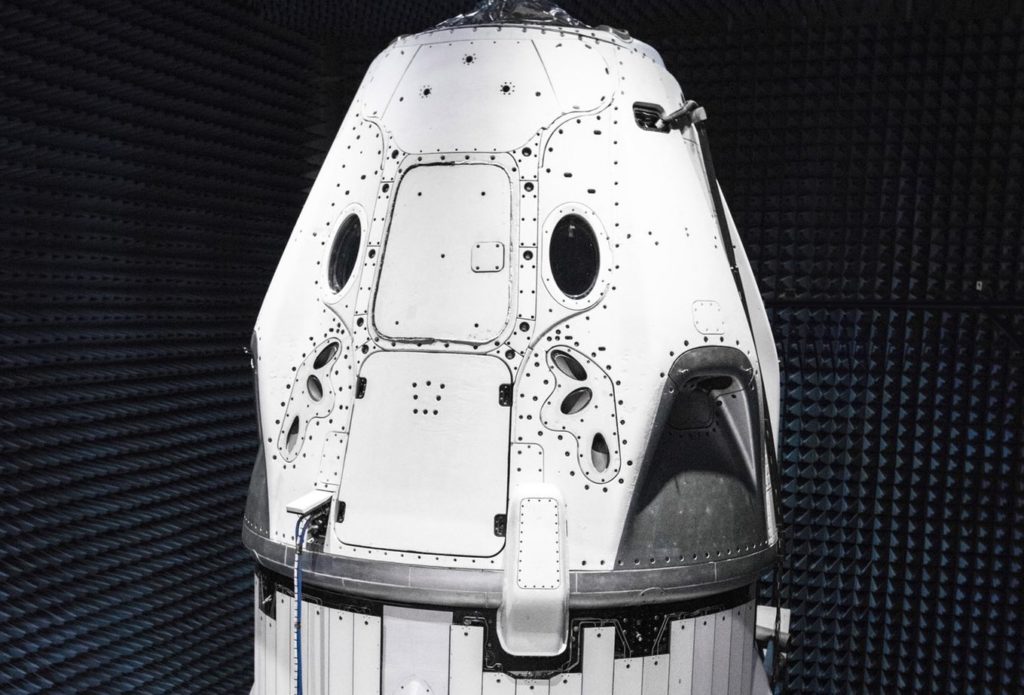
Comprised of a recoverable, reusable crew capsule and an expendable trunk section, the latter part of the Demo-2 Crew Dragon spacecraft is somewhat conspicuously absent in C206’s EMI test video. This seems to imply that its trunk was either tested independently and shipped to Florida beforehand or still needs to be completed, given that EMI testing is generally more effective when performed with a truly complete vehicle.
Crew Dragon’s Demo-2 trunk did appear to be well on its way to completion more than four months ago, so the former explanation is arguably more plausible.
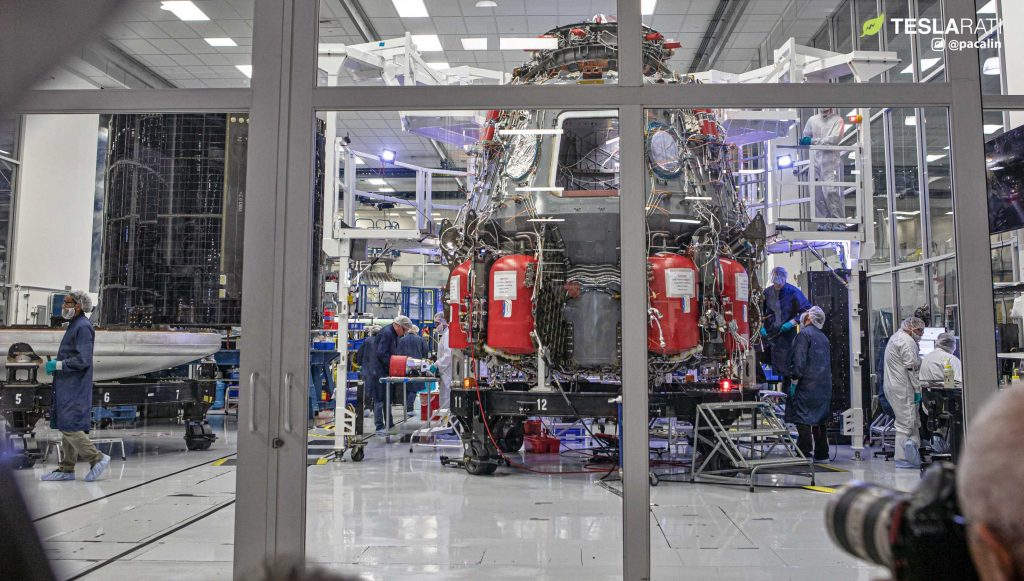
Ultimately, Crew Dragon C206, its Demo-2 trunk section, and Falcon 9’s booster and upper stage are all expected to be at SpaceX’s Florida processing and launch facilities by the end of the month. According to Ars Technica reporter Eric Berger, NASA and SpaceX are working towards a Crew Dragon astronaut launch debut sometime in late-April to late-May and are maintaining a tentative placeholder date on May 7th, 2020.
Looking at past trends, the Crew Dragon spacecraft assigned to SpaceX’s In-Flight Abort test arrived in Florida around the start of October 2019 and was vertical on Falcon 9 and ready for launch by mid-January 2020 — a delta of about 15 weeks. In the interim, SpaceX had to prepare Crew Dragon capsule C205 for an unusual abort thruster static fire test to verify that the fault that destroyed capsule C201 was solved. That test was completed by mid-November. In other words, all things considered equal, SpaceX could technically be ready to launch its first astronauts as few as 6-9 weeks from now – early to late April – if Crew Dragon C206 ships to Cape Canaveral within a week or two.
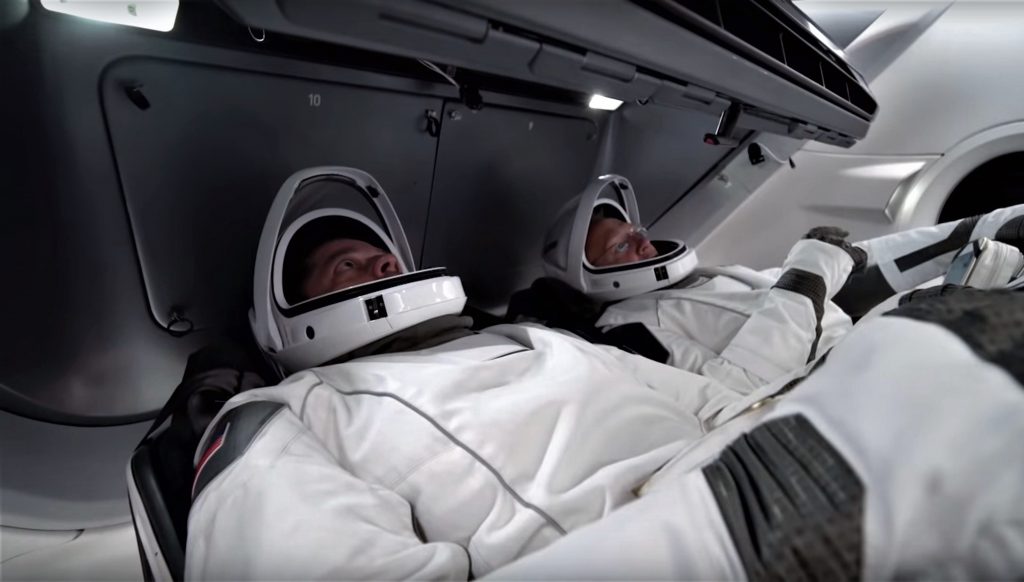
At the same time, compared to Crew Dragon’s Demo-1 and IFA test flights, Demo-2 will have many more moving parts and much higher consequences at stake. Still, barring any unforeseen problems, it’s starting to look all but certain that Crew Dragon will perform its inaugural astronaut launch before the first half of 2020 is out.
Check out Teslarati’s Marketplace! We offer Tesla accessories, including for the Tesla Cybertruck and Tesla Model 3.
Elon Musk
Tesla investors will be shocked by Jim Cramer’s latest assessment
Jim Cramer is now speaking positively about Tesla, especially in terms of its Robotaxi performance and its perception as a company.

Tesla investors will be shocked by analyst Jim Cramer’s latest assessment of the company.
When it comes to Tesla analysts, many of them are consistent. The bulls usually stay the bulls, and the bears usually stay the bears. The notable analysts on each side are Dan Ives and Adam Jonas for the bulls, and Gordon Johnson for the bears.
Jim Cramer is one analyst who does not necessarily fit this mold. Cramer, who hosts CNBC’s Mad Money, has switched his opinion on Tesla stock (NASDAQ: TSLA) many times.
He has been bullish, like he was when he said the stock was a “sleeping giant” two years ago, and he has been bearish, like he was when he said there was “nothing magnificent” about the company just a few months ago.
Now, he is back to being a bull.
Cramer’s comments were related to two key points: how NVIDIA CEO Jensen Huang describes Tesla after working closely with the Company through their transactions, and how it is not a car company, as well as the recent launch of the Robotaxi fleet.
Jensen Huang’s Tesla Narrative
Cramer says that the narrative on quarterly and annual deliveries is overblown, and those who continue to worry about Tesla’s performance on that metric are misled.
“It’s not a car company,” he said.
He went on to say that people like Huang speak highly of Tesla, and that should be enough to deter any true skepticism:
“I believe what Musk says cause Musk is working with Jensen and Jensen’s telling me what’s happening on the other side is pretty amazing.”
Tesla self-driving development gets huge compliment from NVIDIA CEO
Robotaxi Launch
Many media outlets are being extremely negative regarding the early rollout of Tesla’s Robotaxi platform in Austin, Texas.
There have been a handful of small issues, but nothing significant. Cramer says that humans make mistakes in vehicles too, yet, when Tesla’s test phase of the Robotaxi does it, it’s front page news and needs to be magnified.
He said:
“Look, I mean, drivers make mistakes all the time. Why should we hold Tesla to a standard where there can be no mistakes?”
It’s refreshing to hear Cramer speak logically about the Robotaxi fleet, as Tesla has taken every measure to ensure there are no mishaps. There are safety monitors in the passenger seat, and the area of travel is limited, confined to a small number of people.
Tesla is still improving and hopes to remove teleoperators and safety monitors slowly, as CEO Elon Musk said more freedom could be granted within one or two months.
News
Tesla launches ultra-fast V4 Superchargers in China for the first time
Tesla has V4 Superchargers rolling out in China for the first time.

Tesla already has nearly 12,000 Supercharger piles across mainland China. However, the company just initiated the rollout of the ultra-fast V4 Superchargers in China for the first time, bringing its quick-charging piles to the country for the first time since their launch last year.
The first batch of V4 Superchargers is now officially up and running in China, the company announced in a post on Chinese social media outlet Weibo today.
The company said in the post:
“The first batch of Tesla V4 Superchargers are online. Covering more service areas, high-speed charging is more convenient, and six-layer powerful protection such as rain and waterproof makes charging very safe. Simultaneously open to non-Tesla vehicles, and other brands of vehicles can also be charged. There are more than 70,000 Tesla Superchargers worldwide. The charging network layout covers 100% of the provincial capitals and municipalities in mainland China. More V4 Superchargers will be put into use across the country. Optimize the charging experience and improve energy replenishment efficiency. Tesla will accompany you to the mountains, rivers, lakes, and seas with pure electricity!”
The first V4 Superchargers Tesla installed in China are available in four cities across the country: Shanghai, Zhejiang, Gansu, and Chongqing.

Credit: Tesla China
Tesla has over 70,000 Superchargers worldwide. It is the most expansive and robust EV charging network in the world. It’s the main reason why so many companies have chosen to adopt Tesla’s charging connector in North America and Europe.
In China, some EVs can use Tesla Superchargers as well.
The V4 Supercharger is capable of charging vehicles at speeds of up to 325kW for vehicles in North America. This equates to over 1,000 miles per hour of charging.
Elon Musk
Elon Musk hints at when Tesla could reduce Safety Monitors from Robotaxi
Tesla could be reducing Safety Monitors from Robotaxi within ‘a month or two,’ CEO Elon Musk says.

Elon Musk hinted at when Tesla could begin reducing Safety Monitors from its Robotaxis. Safety Monitors are Tesla employees who sit in the front passenger seat during the driverless rides, and are there to ensure safety for occupants during the earliest rides.
Tesla launched its Robotaxi fleet in Austin last Sunday, and after eight days, videos and reviews from those who have ridden in the driverless vehicles have shown that the suite is safe, accurate, and well coordinated. However, there have been a few hiccups, but nothing that has put anyone’s safety in danger.
A vast majority — close to all of the rides — at least according to those who have ridden in the Robotaxi, have been performed without any real need for human intervention. We reported on what was the first intervention last week, as a Safety Monitor had to step in and stop the vehicle in a strange interaction with a UPS truck.
Watch the first true Tesla Robotaxi intervention by safety monitor
The Tesla and UPS delivery truck were going for the same street parking space, and the Tesla began to turn into it. The UPS driver parallel parked into the spot, which was much smaller than his truck. It seemed to be more of an instance of human error instead of the Robotaxi making the wrong move. This is something that the driverless cars will have to deal with because humans are aggressive and sometimes make moves they should not.
The Safety Monitors have not been too active in the vehicles. After all, we’ve only seen that single instance of an intervention. There was also an issue with the sun, when the Tesla braked abnormally due to the glare, but this was an instance where the car handled the scenario and proceeded normally.
With the Robotaxi fleet operating impressively, some are wondering when Tesla will begin scaling back both the Safety Monitors and Teleoperators that it is using to ensure safety with these early rides.
CEO Elon Musk answered the inquiry by stating, “As soon as we feel it is safe to do so. Probably within a month or two.”
As soon as we feel it is safe to do so.
Probably within a month or two. We continue to improve the Tesla AI with each mile driven.
— Elon Musk (@elonmusk) June 30, 2025
Musk’s response seems to confirm that there will be fewer Teleoperators and Safety Monitors in the coming months, but there will still be some within the fleet to ensure safety. Eventually, that number will get to zero.
Reaching a point where Tesla’s Robotaxi is driverless will be another significant milestone for the company and its path to fully autonomous ride-sharing.
Eventually, Tesla will roll out these capabilities to consumer-owned vehicles, offering them a path to generate revenue as their car operates autonomously and completes rides.
For now, Tesla is focusing on perfecting the area of Austin where it is currently offering driverless rides for just $4.20 to a small group of people.
-

 News5 days ago
News5 days agoTesla Robotaxi’s biggest challenge seems to be this one thing
-

 News2 weeks ago
News2 weeks agoTesla confirms massive hardware change for autonomy improvement
-

 Elon Musk2 weeks ago
Elon Musk2 weeks agoElon Musk slams Bloomberg’s shocking xAI cash burn claims
-

 News2 weeks ago
News2 weeks agoTesla features used to flunk 16-year-old’s driver license test
-

 News2 weeks ago
News2 weeks agoTesla China roars back with highest vehicle registrations this Q2 so far
-

 News2 weeks ago
News2 weeks agoTexas lawmakers urge Tesla to delay Austin robotaxi launch to September
-

 News2 weeks ago
News2 weeks agoTesla dominates Cars.com’s Made in America Index with clean sweep
-

 News2 weeks ago
News2 weeks agoTesla’s Grok integration will be more realistic with this cool feature





















